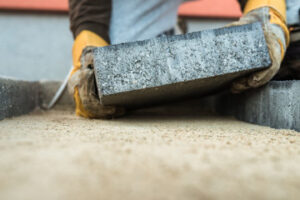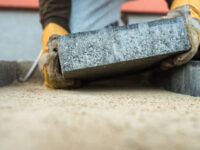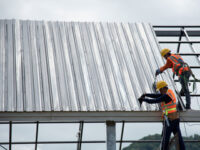Foundation Repair – Why It’s Important to Repair Your Foundation Early
Whether you notice minor cracks or significant structural shifts, foundation issues don’t go away on their own. Taking steps to repair them early can prevent more serious issues and lower your repair costs.
Pros Foundation Repair Greensboro NC experts restore the elevation your home was built at so that it works as intended. This includes closing cracks, re-aligning doors and windows, and keeping trim intact.
Foundation cracks aren’t necessarily cause for panic, but they do need to be addressed. Most cracks are caused by the normal settling of homes and will correct themselves as the soil around them compacts and shifts. However, some cracks indicate more serious structural issues and warrant immediate professional assessment.
If you see a vertical, horizontal or diagonal crack running through your foundation walls, take the time to get it assessed by a pro as soon as possible. These more serious cracks may indicate a significant shift in your foundation or the underlying soils, which can lead to major structural problems and wall collapse.
Non-structural hairline cracks in your foundation can be repaired by injecting a high-strength epoxy that fills the cracked area and prevents water leakage. If the cracks are wider, you will need to install a steel plate anchor or carbon fiber straps to stabilize the wall and prevent further damage.
Depending on the nature of your cracks, professional experts will use different methods to repair them. For example, they might drill port holes into the foundation walls from top to bottom 10 inches apart and pump flexible resin through them. Then, they will backfill the hole with crushed rock to support the foundation.
The process can sound intense—excavating soil and drilling into your foundation walls may not be something you want to do on your own. Once the work is completed, a crew will return to fill any excavated areas with dirt and compact the soil to prevent future movement. They will also remove all materials, tools and debris from the site and leave the area clean.
When it comes to cracks in your foundation, the earlier they are addressed, the easier and cheaper the repair will be. To avoid waiting until you’re faced with more extensive damage and higher repair costs, be sure to check gutters and downspouts regularly for clogs, and make sure they are properly channeling water away from your home. Also, keep an eye out for pools of water near your foundation and take steps to correct any drainage issues.
Shifting
Shifting in your foundation is a serious problem that needs to be addressed immediately. It can lead to a number of issues, including cracks in walls and uneven floors. Fortunately, there are many solutions available that can stabilize your foundation and prevent further damage.
Among the most obvious signs of shifting in your foundation are gaps between the frames of doors and windows. These gaps are caused by the movement of the foundation up or down, which can cause the drywall to stress and crack. Doors and windows that are “sticky” or hard to close may also indicate that your foundation is shifting.
Hairline cracks that are slowly growing can also be a sign of shifting in your foundation. These types of cracks are typically found in poured concrete foundations, but can also be seen in block foundations if the shift is significant enough. In addition, you can check for shifting by observing whether your floors are sloping or uneven.
There are many reasons that your foundation could be shifting, and most of these reasons can be prevented with routine maintenance. Watering your foundation regularly, ensuring that drainage systems are working properly, and keeping large trees away from your home can help ensure that the soil stays in good condition and prevents foundation problems.
There are several ways to repair a shifting foundation, and it’s important to consult with a professional to decide the best solution for your situation. For example, wall anchors and helical tiebacks can be installed to stabilize walls that are bowing or cracking due to pressure from water or soil. Grouting and mudjacking are less expensive methods that can be used to fill minor cracks and prevent moisture damage. However, they can’t address the underlying causes of shifting in your foundation. In these cases, underpinning is often recommended as the best option. This involves digging underneath your foundation and installing steel or helical piers to provide additional support. Once the piers are in place, they can lift your foundation back to its original position and prevent further movement.
Water Leaks
Foundation leaks are a serious problem that can lead to mold, wood damage, and skyrocketing water bills. The good news is that they’re almost always preventable. Leaks occur when the soil around a home’s foundation becomes saturated and can’t drain away. This is typically caused by clogged gutters, downspouts that don’t direct water away from the house, improper grading, broken plumbing lines, or other factors.
Over time, this excess water can cause cracks and shift the foundation, allowing water to seep through the concrete walls. This not only leads to rotting and mold, but can also cause the walls to bow in or out. The most effective solution is to hire a professional waterproofing contractor to assess the situation and implement long-term solutions that will protect your home and prevent future problems.
If you suspect your basement is leaking, it’s important to recognize the signs early so that you can call a professional right away. In addition to the obvious moisture stains, you may also notice a musty smell or puddles in your basement after it rains. These are all indicators that you’ve let the situation get out of hand and need to act immediately.
Waterproofing contractors use a variety of methods to seal leaky foundations, depending on the situation. If the crack is small, they can use hydraulic cement to fill it and stop the flow of water. If the walls are bowing, they can install anchors that will help to stabilize and reinforce them.
When the issue is serious and there are large cracks in the foundation, they will likely need to dig and apply an external waterproof barrier. This is a more involved process, but it will ensure that the cracks are completely sealed and won’t allow any more water into your home.
While concrete may look impenetrable, it’s actually a very porous material. As a result, it’s easy for water to seep through and cause significant damage. This can be a very difficult issue to address and requires the assistance of a foundation repair expert.
Structural Damage
Structural damage is harm to a building’s key support systems like walls that bear weight, the foundation and other vital parts that keep your building stable. This type of damage can cause floors to tilt, walls to crack and crumble, and in severe cases the whole building could collapse. It’s important to recognize and understand structural damage so you can take preventative measures and address it quickly before it gets worse.
Even small shifts in your home’s foundation need to be addressed. Ignoring them can lead to more serious problems over time, including cracked walls and uneven floors. You should also watch out for water spots on ceilings and walls, if they’re getting bigger it could indicate a leak in your foundation. Doors and windows that no longer open and close properly could also indicate a problem with your foundation.
Wall cracks are one of the most obvious signs that a repair is needed. If you see hairline cracks or larger diagonal cracks in the drywall it’s probably a good idea to call a repair company. These types of cracks are often caused by settling or the natural concrete curing process. However, horizontal cracks or “stair-step” cracks in brick or block walls are a sign of more serious foundation issues and might require immediate attention.
Other signs of a failing foundation include sagging or leaning walls, tilting floorboards, and squeaky stairs. Uneven floors are another common symptom of foundation problems and can be caused by shifting soil, water leaks, or other factors.
Fortunately, most structural damage can be repaired using push piers. These piers are driven into the ground until they reach bedrock or a firm strata and then attach to your foundation. They can then be used to lift and level your foundation. If your foundation is seriously damaged, you may need to replace the entire structure. Other signs of a bad foundation that could necessitate replacement include rotted sill plates, a build up of hydrostatic pressure, and widespread cracking.






